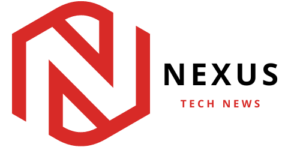The technological industry continues to grow dramatically as 2023 progresses. Web 3.0 continues to change sectors by allowing new solutions. Outlier Ventures’ estimate for 2021 indicates that the number of Web 3.0 projects has increased by approximately 600% since 2016. It is also evident from the data that we are on the threshold of a new era: the age of Web 4.0. Although it is difficult to forecast the future with precision, a number of trends and events imply what the Web 4.0 landscape may look like in the next years.
Before delving into what the future holds for Web 4.0, it is necessary to comprehend what Web 4.0 is. Web 4.0 is commonly understood to be the next generation of the internet, in which artificial intelligence, machine learning, and other sophisticated technologies will be woven into the web’s fabric. This will result in a more intelligent, personalized, and interactive online experience, which will revolutionize the way we engage with data.
Further advancements in artificial intelligence (AI) and machine learning will be one of the primary forces propelling Web 4.0. (ML). The size of the global market for artificial intelligence is projected to increase from USD 58.3 billion in 2021 to USD 309.6 billion in 2026, at a compound annual growth rate (CAGR) of 39.7 percent. Gartner reports that 85% of organizations have either deployed, are in the midst of deploying, or plan to implement AI in some form by 2021.
The size of the worldwide machine learning market is projected to increase from USD 8.5 billion in 2020 to USD 117.2 billion by 2027, at a compound annual growth rate (CAGR) of 43.8%, with 58% of organizations now utilizing or expecting to employ ML in the next months. As technologies such as AI and ML can comprehend and analyze complicated data at a quicker rate as they advance, it is anticipated that they will enable web apps to become more intelligent and adaptable, allowing them to give consumers with more personalized experiences.
The expansion of the Internet of Things will also have a significant impact on Web 4.0’s future (IoT). By 2027, the global IoT industry is expected to reach a worth of USD 1.5 trillion, with an estimated 30 billion IoT devices in use worldwide by 2025. As more gadgets connect to the internet, the amount of data that must be processed and analyzed will explode. This will necessitate more potent and efficient computer systems, which will spur the development of new technologies and systems capable of managing this data deluge.
The potential for Web 4.0 to be more decentralized and democratic than prior generations of the web is one of its most enticing features. Individuals and small companies will have new chances to engage in the online ecosystem without relying on huge organizations or centralized platforms, as blockchain technology and decentralised apps (dApps) gain popularity.
Although being a precursor to advancement, Web 4.0 will provide new obstacles and issues. Privacy and security will be one of the largest obstacles. As the web grows more sophisticated and individualized, more user information will be gathered and analyzed. This will necessitate additional controls and laws to guarantee that user data is secured and not abused. Web 4.0 might potentially have a significant effect on jobs. As AI and machine learning get more sophisticated, there is a risk that they may displace human labor in a number of areas. This will necessitate a deliberate effort to retrain and reskill people in order to assure their adaptability to the changing employment market.
The prospect for Web 4.0 in 2023 is yet exciting and promising. As new technologies develop and mature, we may anticipate a web experience that is more intelligent, personalised, and decentralized, which will revolutionize the way we interact with information. Yet, we must also be cognizant of the issues and concerns of this new age, such as privacy, security, and employment. Yet, Web 4.0 will bring about a substantial shift in how technology is seen.
